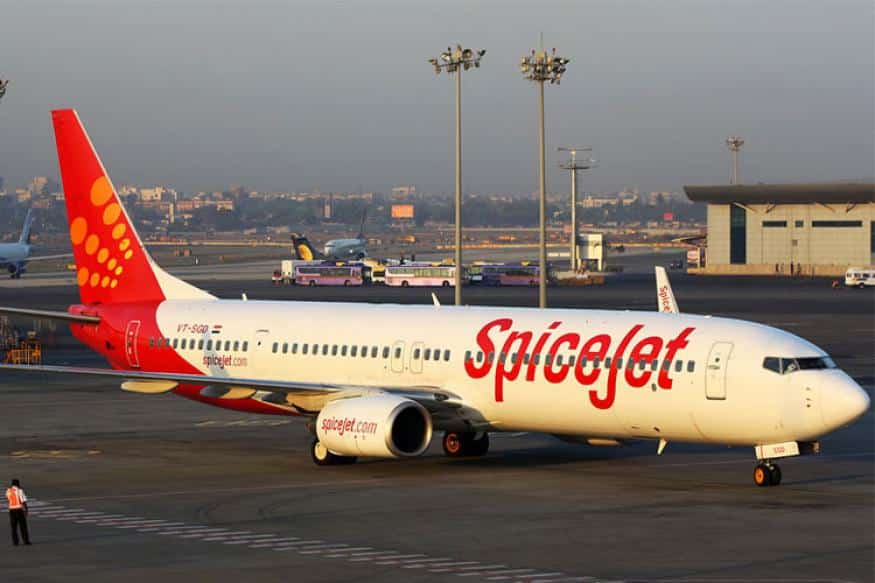Aerospace
SpiceJet may offer in-flight Wi-Fi services for a fee

According to mint source In a bid to boost ancillary revenue and compete with full-service airlines, low-fare carrier SpiceJet Ltd may start offering in-flight Internet services to its passengers.
The paid service could allow passengers to stream live movies and cricket on platforms such as Hotstar and Netflix besides help retain business passengers who may drift towards full-service airlines who are planning to offer a similar service.
“We are seeing what all new things we can do to enhance passenger journey,” the chairman Ajay Singh said in an interview. “We should make the journey interesting and we should get ancillary revenue.”
Budget airlines offer services such as food and lounge access for an additional fee. In recent years, airlines have benefitted as liberal aviation regulators have allowed them to charge extra baggage fees, seat selection fee and Internet fee that have added to profits.
Internet services are currently barred on flights. Some airlines have started experimenting with streaming preloaded content onto passengers’ mobiles and laptops. Jet Airways and Vistara have it on some flights and this is likely to be offered by Air India as well.
The SpiceJet service will be paid, Singh said, and could be offered on its new planes.
“What we are looking at is full blown Internet on which you can browse the Internet. It will be on new planes. As far old planes are concerned, we are looking at it,” he said. “We will charge for it.”
SpiceJet which currently has 49 planes, has ordered nearly 205 next-generation Boeing 737 Max aircraft. Of these, 155 will be delivered between 2018 and 2024.
With airlines lobbying the aviation ministry, it has opened talks with other ministries to relax rules which obstruct such a service.
“The telecom ministry is currently looking into the matter,” said an aviation ministry official who did not want to be named.
One of the key reservations was the servers through which Internet traffic will be passing and how it will be kept under Indian jurisdiction for security oversight, the official said.
Wi-Fi equipment costs could be very steep. Besides a one time cost of Rs3 crore per plane, the airline will need to pay about Rs4 lakh per month, according to aviation consulting firm CAPA.

Aerospace
Boeing Transfers Rocket Stage to NASA, Paving Way for Human Moon Mission

Boeing has achieved a significant milestone by providing NASA with the second core stage of the Space Launch System (SLS) rocket.
This crucial component, crafted at NASA’s Michoud Assembly Facility (MAF), is set to propel the Artemis II crew into lunar orbit, marking humanity’s return to deep space after a 50-year hiatus.
The monumental Boeing-built rocket stage, the largest element of the Artemis II mission, will embark on a journey aboard the Pegasus barge, traveling 900 miles to NASA’s Kennedy Space Center.
Comparison of two legendary aircraft B777x vs B747 aircraft:Click here
Upon arrival, it will be meticulously integrated with other essential Artemis II components, including the upper stage, solid rocket boosters, and NASA’s Orion spacecraft within the iconic Vehicle Assembly Building. This intricate integration process is a vital step toward the eagerly anticipated Artemis II launch, slated for 2025.
“Boeing-built products helped land humankind on the moon in 1969, and we’re proud to continue that legacy through the Artemis generation,” remarked Dave Dutcher, vice president and program manager for Boeing’s SLS program. “Together, with NASA and our industry partners and suppliers, we are building the world’s most capable rocket and paving the way to deep space through America’s rocket factory in New Orleans.”
NASA, Lockheed Martin Reveal X-59 Quiet Supersonic Aircraft:Click here
The delivery of Core Stage 2 marks a significant achievement in the evolution of the SLS rocket. Towering over 200 feet and powered by four RS-25 engines, this core stage, coupled with two solid-fueled booster rockets, will generate a staggering 8.8 million pounds of thrust. This immense power is crucial to launching Artemis II and future missions into the vast expanse of space.
The SLS rocket stands unparalleled in its capability to transport both crew and substantial cargo to the moon and beyond in a single launch. Its extraordinary capacity will facilitate the delivery of human-rated spacecraft, habitats, and scientific missions to destinations including the moon and Mars, ushering in a new era of space exploration.
-

 Travel1 week ago
Travel1 week agoAir India to Expand US Operations with Three New Routes After a Decade
-

 Travel2 weeks ago
Travel2 weeks agoWhy We Should Avoid These Stamps in a Passport
-

 Airlines1 month ago
Airlines1 month agoInvestigations Reveal Fake Chinese Titanium in Boeing and Airbus Jets
-

 Tech4 weeks ago
Tech4 weeks agoChina’s CATL Plans 1,800-Mile Electric Plane Launch by 2027
-

 Airport3 days ago
Airport3 days agoTop 10 Largest Airports in the World by Size
-

 Aerospace4 weeks ago
Aerospace4 weeks agoChina’s Fighter Jets Turn Wings into Autonomous Drones
-

 Airlines4 days ago
Airlines4 days agoAir India Rolls Out A350s for Delhi-New York JFK and Newark Routes
-

 Defence3 weeks ago
Defence3 weeks agoBoeing Enhances Chinook with New Engines and Block II Upgrades at $96 Million







